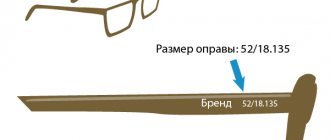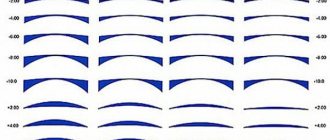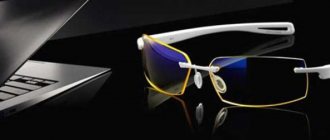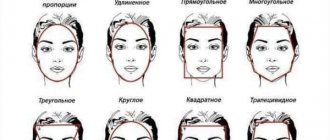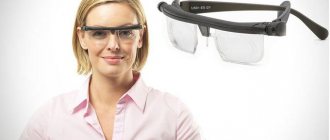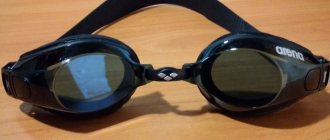Throughout life, human vision is subject to significant stress. Blurred objects in the distance, the inability to focus on text, combined with headaches are symptoms of visual impairment. In this case, correction with glasses or contact lenses will help. To do this, you need to undergo an examination - viziometry by an ophthalmologist or optometrist.
The specialist will enter the results of the examination into the prescription in the form of generally accepted Latin abbreviations, so any doctor can read it, and after reading this article, just any person.
Share
Tweet
Share
Cool
Send
What is viziometry based on?
Visiometry is a diagnostic method that allows you to determine visual acuity. The three most common types are:
- Using tables. This is the most famous way. It requires a table with letter or object (for children) symbols, the sizes of which decrease from top to bottom.
- Refractometry. This technique is more objective, as it is based on data from a device - a refractometer. It is used to confirm the results obtained using tables. Refractometry will also help if there is a suspicion that the patient may be feigning poor vision, for example, during conscription.
- Skiascopy. This method is most often used in very young children, when the child cannot name objects and will not be able to focus his gaze during refractometry. Skiascopy is based on the movement of shadows when a beam illuminates the pupil.
Carrying out the procedure
The first stage of viziometry always includes the tabular method. If there is no doubt about the obtained values, then a prescription is issued based on them. Visiometry using tables is based on the patient’s subjective sensations, as he sees without correction and with correction. Several types of tables are used for the survey:
- Sivtseva-Golovina - with letters, suitable for most adults.
- Orlova - with objects that are easy to recognize - an airplane, a Christmas tree. It is used for children who can speak but do not yet read.
- Landolz - with images of rings with one of the walls interrupted.
Unit converter
Optical power (refractive power) D
- a unit of measurement of the refractive power of an optical system consisting of lenses, convex or concave mirrors. Optical power is calculated using the formula:
D
= 1/ f
where
f
is the focal length of the system. The optical power of lenses with a longer focal length is less.
Optical power is measured in SI units in diopters (D, diopter). Diopter is a non-systemic unit. The corresponding SI unit is the reciprocal meter m⁻¹. For example, a lens having an optical power of 2 diopters can focus parallel rays of light at a distance of ½ meter.
We feel the effect of the above formula when we dive without a mask or swimming goggles - objects under water are blurred because the refractive index of water at 20°C is 1.33. The cornea, which provides about two-thirds of the eye's magnification, has approximately the same refractive index as water. When the cornea is in contact with water, it ceases to magnify the image of surrounding objects, that is, it ceases to be a convex lens. All that remains is the lens, which provides only a third of the total optical power of the eye, or about 20 diopters, and is not capable of providing a sharp image of surrounding objects on the retina. A simple calculation using the above formula shows why this happens: f
= 1/ D
= 1/20 = 0.05 m or 50 mm; at the same time, the diameter of the human eye is approximately 24 mm. As we can see, parallel rays of light entering the eye will be focused far behind the retina. Man is a land creature and the optical system of the human eye is “designed” in such a way that it does not provide normal vision under water without special devices. Sharpness underwater can only be ensured by a mask that provides a layer of air between the eyes and the water.
To measure the refractive power and other optical characteristics of spectacle lenses, dioptrimeters, also called lensmeters, are used - optical instruments consisting of a telescope, a collimator, a holder for the lens being measured and other mechanisms.
I've been wearing glasses for over ten years, so I'll try to tell you how to clean up your regular glasses or sunglasses with or without anti-reflective coatings and oleophobic coatings. By the way, it is much easier to care for glasses with an oleophobic coating than without it!
Many people do things every day that they shouldn’t do: they breathe on their lenses and then wipe them with their sleeve or the edge of their clothing. If this could be done with glass lenses, then plastic will not tolerate this. After a few months, the glasses will be scratched and, to the delight of the optical salon workers, you will come back for new glasses in less than a year.
When I started wearing reading glasses every day 10 years ago, I didn't know how to properly care for them. I have seen advertisements for many eyeglass care products and have even tried a few. But then I realized the best way to care for your glasses without scratching them—they need to be washed! I must say that when I got ready to write about this and began to study the issue, it turned out that the idea is not at all new and many people do this!
Most importantly, never dry your glasses with paper towels. They contain wood particles that will scratch the lenses. Even fabric that is 100% cotton can still be dusty and contain abrasive particles.
You can, of course, use special glasses cleaners, but why spend money if tap water plus a drop of dishwashing liquid and a drop of isopropyl or ethyl alcohol cost next to nothing?
As it turns out, all that is required is to wash the dust off your glasses in warm water, then lightly wipe them with a drop of dishwashing liquid. Rinse with tap water, then with distilled water if the tap water is hard. And finally, dry the glasses with a rubber bulb or compressed gas from a can. After this procedure, the lenses will be clean and scratch-free.
And now in more detail:
Wash your hands to remove oil from your fingers.
Rinse your glasses lenses with warm water to remove dust.
Place a drop of dishwashing liquid on your finger. This liquid is designed to remove grease from dishes. But this is exactly what needs to be done with glasses! Remove fat!
Using a circular motion and using minimal pressure, wash both sides of the lenses with dishwashing liquid. You can also wash the frames, temples, bridge and nose pads with this liquid.
Rinse your glasses with warm water, which should remove all soap. There is no need to rub the lenses with your fingers when rinsing. If tap water is hard, that is, it contains an increased amount of dissolved calcium and magnesium salts, it is advisable to rinse the glasses in distilled water.
After rinsing, shake the glasses thoroughly to remove water. I prefer to do this on my knee.
All that remains is to remove the drops using a rubber bulb or a can of compressed gas to remove dust. If you rinse your glasses with distilled water, they will dry without traces of salts and there is no need to rinse them unless you need them immediately.
Usually, when you order new glasses, they come with a piece of cleaning cloth. Opticians put it in for the sole purpose of making you come to them more often! Any cloth, especially paper towels or napkins, will scratch your glasses lenses because they contain abrasive particles. In addition, they usually do not wipe, but only spread grease and dirt onto the surface of the lenses.
If you are blowing away drops of water with gas from a can, press the trigger slowly so that liquid does not get on the lenses along with the gas. If this does happen, you will have to wash your glasses again. Finally, you can remove any remaining water from the end surfaces of the lenses.
About alcohol. Some people believe that alcohol can damage the anti-reflective coating on lenses or even dull them. Don't know. I always use isopropyl alcohol to remove grease from lenses if they are very dirty. This happens sometimes. I have never noticed any problems with the quality of the coating. As you can see, well-known manufacturers of optical instruments also use isopropyl alcohol in wet wipes to clean lenses and eyeglass lenses.
For those who shoot with SLR cameras, I can say that filters installed on photographic lenses can be washed using the same method. I wash them with dishwashing detergent, then rinse them under the tap, then with distilled water and blow off drops of water with a rubber bulb or gas from a can. Unfortunately, you cannot wash the front lens element in this way.
Author of the article: Anatoly Zolotkov
results
As a result of viziometry, several values are obtained. The lowest line that a person saw is visual acuity. There will be two such values for each eye - with correction and without correction. The result of the examination is recorded in the prescription in the form of Latin abbreviations. It is generally accepted throughout the world that the result is first examined and recorded for the right eye, then for the left.
What are OD and OS?
Let's take a closer look at all the lines of the recipe. The right and left eyes are recorded here using the abbreviation:
- OD – from the Latin oculus dexter (literally – right eye);
- OS – from the Latin oculus sinister (literally – left eye).
If similar changes are detected in both eyes, then the abbreviation OU is used - oculus uterque, which is translated from Latin as “both eyes”. Next to each of these abbreviations, several more alphabetic and numerical values are written down.
Cyl indicator
Cyl is an abbreviation of the Latin cylinder - cylinder. Cylindrical lenses are necessary for a special visual impairment - astigmatism. The number indicates the refractive power along the axes of the cylinder. If astigmatism is combined with myopia, then the value will be with a “-” sign, if with farsightedness, then with a “+” sign.
Ax value
The second criterion used when installing a cylindrical lens is Ax or Axis. This abbreviation denotes the meridian (direction of the angle of inclination) along which the cylindrical glass will be installed. The axis value is fixed in degrees and ranges from 0º to 180⁰:
Natural eye magnifier
Such a natural lens in the human eye is the lens and other translucent media; it is capable of changing its size, and depending on the intensity, its optical power ranges from 57-59 to 70-70.5 m-1 (as diopter is designated). What does this mean in practice? The natural lens of the eye focuses rays at a distance of 1/57 to 1/70.5 meters due to changes in the curvature and size of the lens, it constructs an image on the retina. If the size of the eyeball is increased or decreased in the longitudinal direction, this leads to incorrect display. In the first case, called myopia, due to the increase in distance, focusing occurs earlier than necessary. In the second, everything is diametrically opposite: hypermetropia of the eye causes insufficient space for the formation of an image, and it is formed behind the projection screen of the eye - the retina.
How to read a prescription for glasses?
Let's try to use specific examples to understand what is indicated in the prescription for glasses.
For distance
Poor distance vision - myopia - needs to be corrected with glasses or contact lenses. In this case, the person’s prescription will indicate the dioptre value with a “-” sign. The lenses for such glasses will be spherical and biconvex. It is this structure of glass that will allow the rays to be refracted in such a way that they end up precisely on the retina of the eye.
| Sph | Cyl | Ax |
| O.D. | (-) 3.0D | |
| OS | (-) 1.25 D |
This prescription is written for a person with myopia, as indicated by the “-” sign before the diopter designation. The right eye sees worse - it needs a spherical lens with -3 diopters. The left eye needs a spherical lens with -1.25 diopters.
For up close
When a person has difficulty seeing close objects, he is diagnosed with presbyopia or farsightedness. To correct it, biconvex lenses are needed. Let's look at an example of a prescription for glasses with such lenses.
Visometry: what is it in ophthalmology?
Eye visometry is a non-invasive diagnostic technique that allows you to assess the functioning of the patient’s visual system. Its combined use with other modern techniques makes it possible to identify pathological changes in the structures of the eye. The results of visometry are interpreted in conjunction with data from other studies, which allows for a correct diagnosis.
During the study, the patient takes a sitting position at a distance of 5 meters from the table. As directed by the doctor, he needs to recognize the symbols depicted on it, which are called optotypes. Diagnosis is carried out first for one right eye, then for the left. If the patient needs to choose glasses or contact lenses, both eyes are diagnosed simultaneously.
If optical correction means have already been selected, visometry is carried out twice:
- Without prescribed correction agents - to determine the relative severity;
- Using correction means to determine absolute sharpness.
In order for the results of the procedure to be as accurate as possible, it is necessary to comply with the conditions of the procedure, which are as follows:
- Time of the procedure;
- Table illumination level;
- Distance to table.
Particular attention is paid to illumination, which should be about 700 lux. This approach is completely justified: too bright or, on the contrary, dim light makes it difficult for the patient to recognize optotypes, and therefore can distort diagnostic results.
Sometimes a Roth apparatus is used for visometry, which provides the table with the necessary level of illumination. This is necessary if a visually impaired patient is diagnosed.


